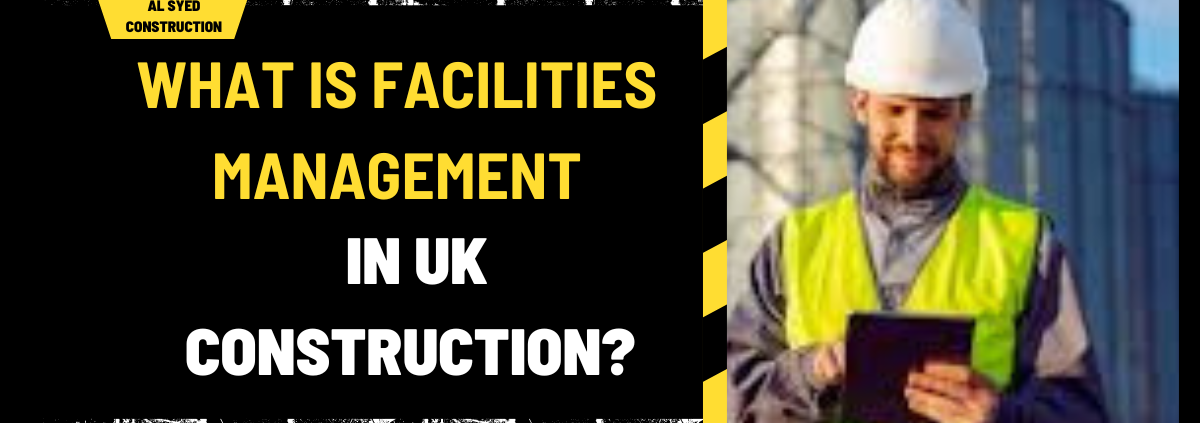What is Facilities Management in UK Construction? A Comprehensive Overview
Facilities management (FM) in construction is a crucial discipline that involves the maintenance and operational management of buildings and infrastructure. It ensures that the facilities support the organization’s core activities and enhance the overall efficiency and productivity of the workspace. This article provides an in-depth exploration of facilities management, its significance in construction, key responsibilities, and best practices.
Table of Contents
1. Definition of Facilities Management
Facilities Management encompasses a broad range of activities aimed at ensuring that physical assets—such as buildings, infrastructure, and equipment—are maintained effectively. It involves managing the day-to-day operations, maintenance, and strategic planning necessary to optimize the performance and longevity of these assets.
A. Core Functions
- Operational Management: Overseeing the daily operations of facilities, including cleaning, security, and utilities management.
- Maintenance: Implementing preventive and corrective maintenance programs to ensure the longevity and functionality of building systems and equipment.
- Space Management: Efficiently managing the use of space within a facility to enhance productivity and meet organizational needs.
- Compliance: Ensuring that facilities adhere to local, national, and international regulations and standards.
2. Importance of Facilities Management in Construction
Facilities management is integral to the success of construction projects and the ongoing operations of facilities. Its importance includes:
A. Enhancing Building Performance
Effective facilities management ensures that:
- Building Systems Operate Efficiently: Regular maintenance and upgrades keep HVAC, plumbing, and electrical systems running smoothly.
- Energy Efficiency: Implementing energy-saving measures reduces operational costs and environmental impact.
B. Extending Asset Lifespan
Proper management and maintenance practices:
- Prevent Premature Wear: Regular inspections and timely repairs help avoid costly replacements.
- Optimize Asset Utilization: Ensuring that assets are used effectively and maintained according to manufacturer recommendations.
C. Supporting Organizational Goals
Facilities management contributes to:
- Operational Efficiency: Streamlined processes and well-maintained facilities support organizational productivity.
- Employee Satisfaction: A well-maintained, comfortable environment improves employee morale and productivity.
3. Key Responsibilities of Facilities Managers
Facilities managers handle a diverse range of responsibilities that are critical to the successful operation of buildings and infrastructure. These include:
A. Maintenance Management
- Preventive Maintenance: Scheduling regular inspections and servicing to prevent equipment failure and extend asset life.
- Corrective Maintenance: Addressing and repairing issues as they arise to minimize downtime and disruptions.
B. Space and Asset Management
- Space Planning: Designing and managing space layouts to meet organizational needs and improve efficiency.
- Asset Tracking: Maintaining records of all assets, including their condition, location, and maintenance history.
C. Health and Safety Compliance
- Regulatory Adherence: Ensuring that facilities comply with health, safety, and environmental regulations.
- Emergency Preparedness: Developing and implementing emergency response plans to address potential incidents effectively.
D. Vendor and Contractor Management
- Service Contracts: Managing relationships with service providers and contractors to ensure quality and cost-effectiveness.
- Performance Monitoring: Evaluating vendor performance to ensure service levels meet contractual obligations.
4. Best Practices in Facilities Management
To achieve optimal results, facilities managers should adhere to several best practices:
A. Implementing Technology
- Building Management Systems (BMS): Utilizing BMS to monitor and control building systems efficiently.
- Computerized Maintenance Management Systems (CMMS): Employing CMMS to track maintenance activities, schedule work orders, and manage inventory.
B. Regular Training and Development
- Staff Training: Providing ongoing training to facilities management staff to keep them updated on the latest techniques and technologies.
- Professional Development: Encouraging certification and continuous learning to enhance skills and knowledge.
C. Strategic Planning
- Long-Term Planning: Developing long-term maintenance and operational strategies to align with organizational goals and budgetary constraints.
- Risk Management: Identifying potential risks and developing mitigation strategies to manage unforeseen issues effectively.
D. Sustainability Initiatives
- Green Practices: Implementing environmentally friendly practices, such as waste reduction and energy conservation, to promote sustainability.
- Certification: Achieving certifications like LEED (Leadership in Energy and Environmental Design) to demonstrate commitment to sustainable practices.
5. Challenges in Facilities Management
Facilities managers face several challenges that can impact their effectiveness:
A. Budget Constraints
- Cost Management: Balancing budget limitations with the need for effective maintenance and operational services.
- Funding Allocation: Prioritizing expenditures to address the most critical needs while maintaining overall facility performance.
B. Evolving Technology
- Adapting to New Technologies: Keeping up with rapidly changing technology and integrating new systems into existing operations.
- Training Needs: Ensuring staff are adequately trained to use advanced technologies and systems effectively.
C. Regulatory Changes
- Compliance Updates: Staying informed about changes in regulations and ensuring facilities remain compliant with new standards.
- Implementation Costs: Managing the costs associated with upgrading facilities to meet new regulatory requirements.
6. Conclusion
Facilities management in construction is a vital aspect of ensuring that buildings and infrastructure operate efficiently and effectively. By encompassing a broad range of functions, from maintenance and space management to compliance and sustainability, facilities management plays a crucial role in supporting organizational goals and enhancing overall performance. Implementing best practices, addressing challenges, and leveraging technology are essential for successful facilities management.




